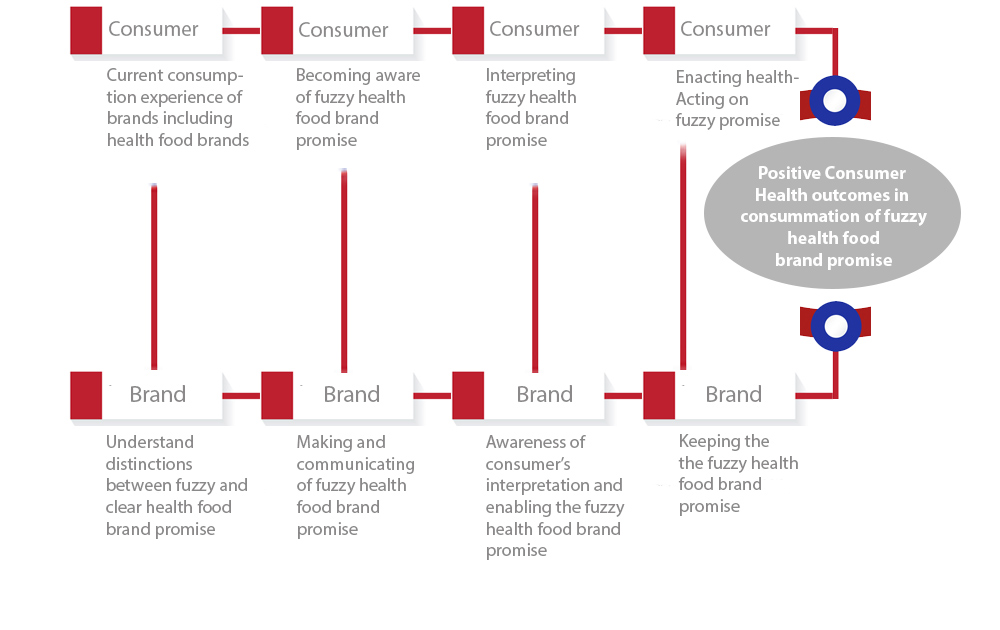Eating sugar-free biscuits and low calories snacks or drinking a diet milkshake does not necessarily mean that a person leads a healthy life-style. Health food brands offer a promise of healthy living, but need the consumer to adapt their own lifestyle if they are to really reap the benefits for their body and well-being.
A large part of the promise made by health food brands does not just depend on the consumption of their products, that is why brands need to step up and adopt a co-creative value paradigm with consumers. For example, consumers need to incorporate other activities into their lives, such as healthy eating, physical exercise, and socializing, if they are to fully embrace a healthy lifestyle.
As with products from all categories, it is important to analyse how a shared brand value is built. This can lead to the restructuring of some processes used by the brand to connect with its consumers, and, if needed, transfer resources from Production to Customer Service.
In our article “Delivering a health food brand promise through a proposed value co-creation model”, cowritten with Dr. Lisa Peñaloza, a professor at KEDGE Business School in France, we propose a health food brand value co-creation model. We start with three marketing steps:
- Make a promise: Make that promise heard via publicity, sales and customer service.
- Facilitate the promise: use internal marketing resources to deliver on that promise.
- Keep the promise: The real “litmus test” is when the consumer recognizes the product’s value when using it.
Realizing that consumer expectations arise from this promise, it is important to understand its overall concept. The brand promiseessentially encompasses the benefits offered by a brand based on certain specific pre-established conditions, which must be subsequently fulfilled in the future.
When it comes to health foods, fuzzy promises, which are not just reliant on the internal product condition, but also on a larger scale of product conditions to help qualify the product’s healthy vision, are just as relevant as clear promises, which depend solely on the product’s internal conditions. Health food brands need to know how consumers interact with these conditions. For example, how can they find out more information on the relationships between nutritional value and physical exercise? Or social relationships and mental well-being?
A value co-creation model
Our model proposes that both brands and consumers can fulfil these promises together, by following these steps:
- The first step is individual consumer experience feedback to the brand managers focusing on how these brand promises were interpreted, which allows them to understand and distinguish clear promises from fuzzy promises.
- The brand managers make clear and fuzzy promises by means of health or nutritional declarations that are then placed on the packaging or displayed in their advertisements. Once these fuzzy promises are communicated, the consumer will be aware of them.
- The consumer interprets the fuzzy promises. The brand accepts the interpretation and facilitates the promise, reassigning its resources if necessary. For example, it can enable more customer interaction via its website.
- The consumer takes part in processes established by the brand, and the brand in turn must keep the promise passing the “litmus test”.
- The final step is when the promise comes into fruition and has a positive impact on the consumer’s health. The relationship between brand and consumer is then strengthened by the co-creation of health.

This model is a useful tool when designing a value co-creation process and developing a brand promise. It can also be used by managers to focus their skills on a different and innovative brand vision, while also obtaining new consumer knowledge that allows them to reassign their organization’s resources and capabilities.




